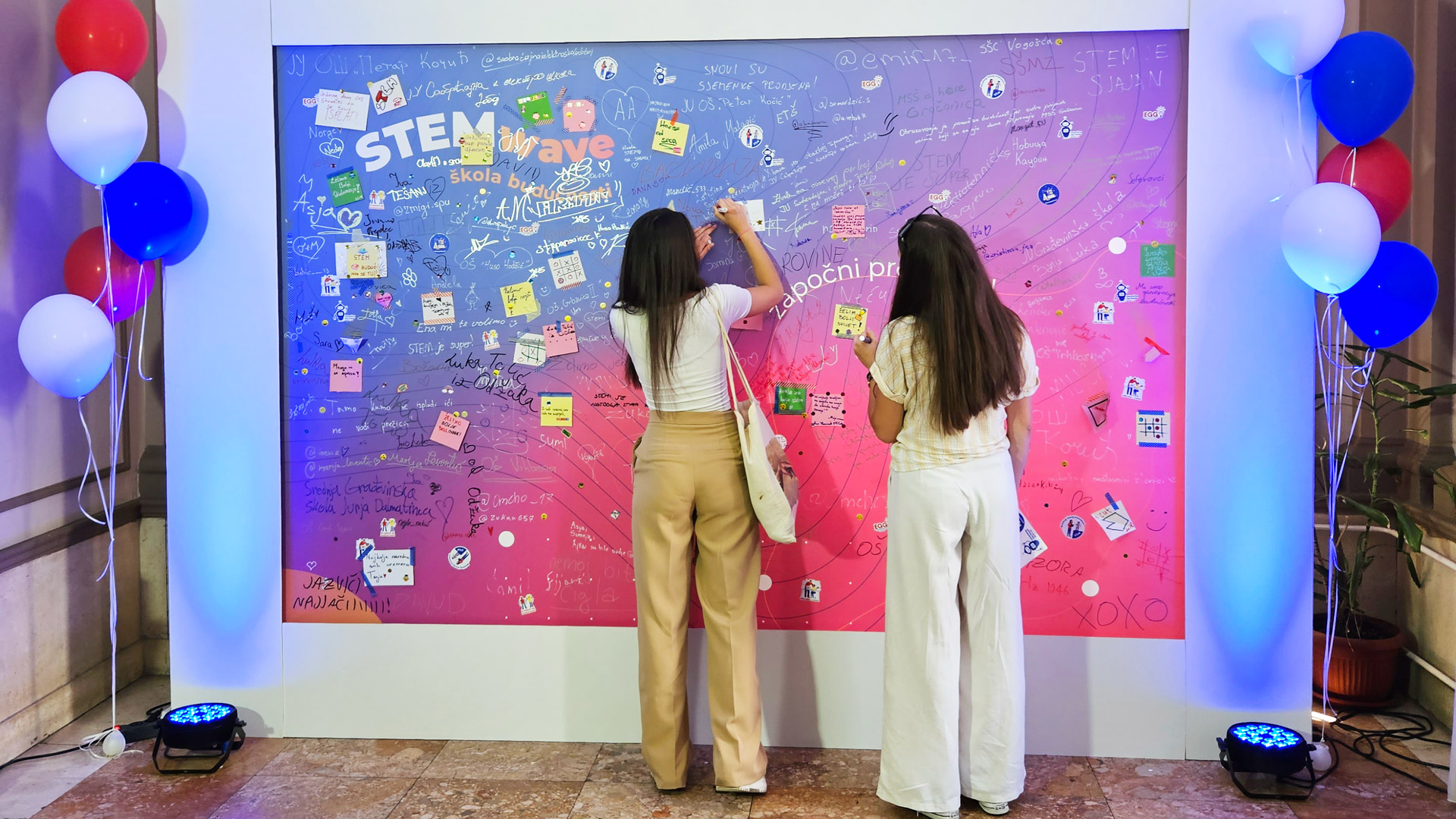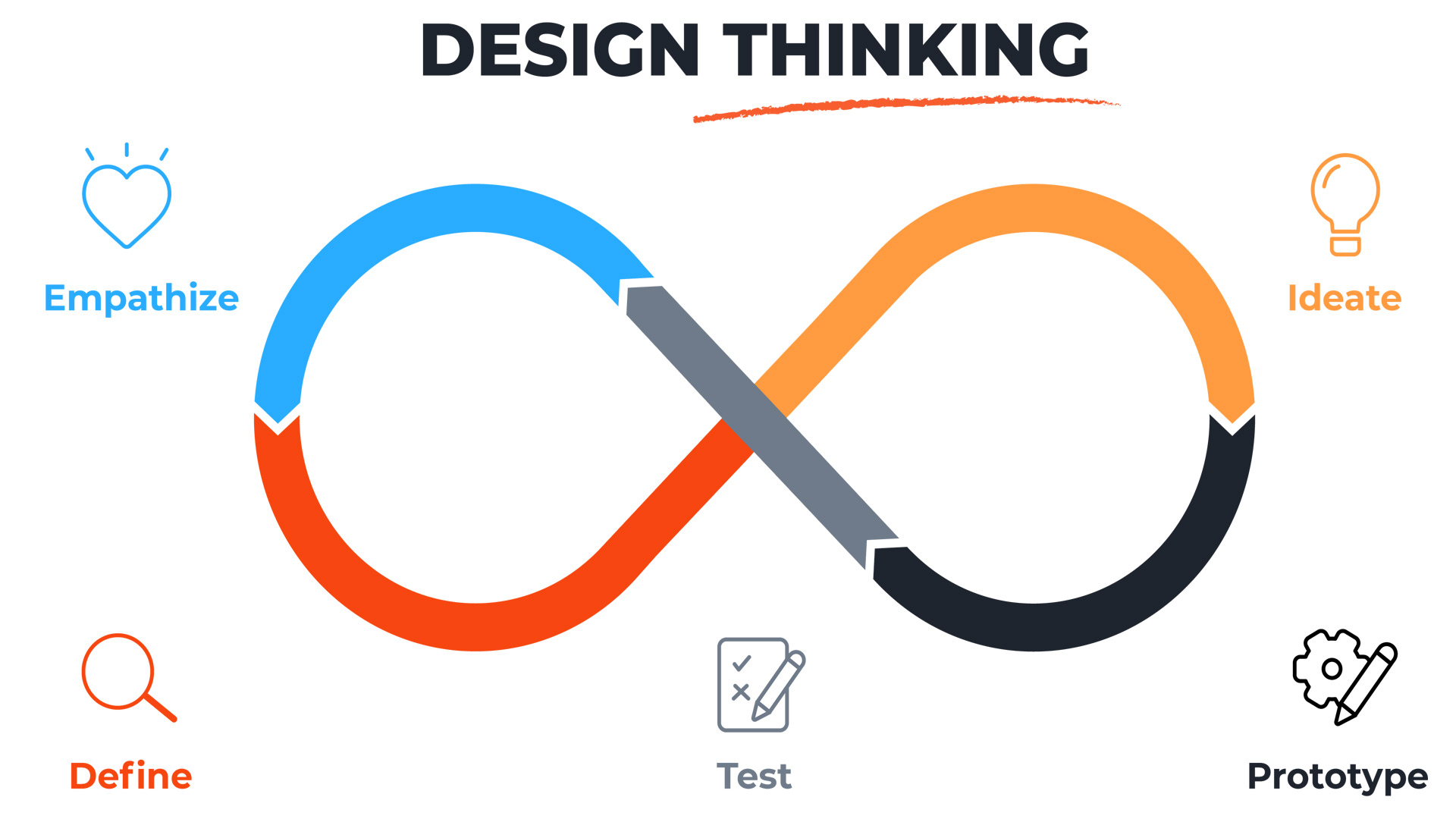Albert Einstein once said, “I have no special talents. I am only passionately curious.”
His simple statement reveals a profound truth – creativity and curiosity are the driving forces behind great discoveries and life-changing innovations. And the great news is that with the right mindset and tools, anyone can develop them! 💥🎉🥳
One of the most powerful tools to nurture creativity and curiosity is Design Thinking – it offers a pathway to expand the mind’s potential and apply these skills to any area of life.
But what is it exactly?
Design Thinking is more than just a problem-solving method – it’s a mindset. 🧠
It encourages us to approach challenges with curiosity, empathy, willingness to experiment (and, of course, fail many times). At its core, it’s about understanding people’s needs, brainstorming creative solutions, and testing ideas to see what works.
How Design Thinking builds Creativity and Curiosity
Design Thinking is a step-by-step process that naturally cultivates these skills:
- Empathize: Learning to understand other people’s needs. For instance, asking students to imagine what would make their school more eco-friendly.
- Define: Clarifying the challenge. What specific problem are we trying to solve?
- Ideate: Encouraging brainstorming and thinking outside the box. There are no wrong ideas – only possibilities to explore!
- Prototype: Creating a small, testable version of our idea.
- Test: Trying it out and learning from the feedback.
Why Creativity and Curiosity matter through real life examples
Creativity and curiosity are like muscles—they grow stronger the more you use them. These skills help us solve problems, adapt to new situations, and explore possibilities we hadn’t considered before. These skills are used anywhere and anytime, and are very much in demand as top qualities in leadership according to the Harvard Business School research.

Real life examples:
- Marie Curie’s 🧪 relentless curiosity about the unknown led to groundbreaking discoveries in radioactivity, despite the societal barriers she faced. Ultimately, she became the first woman ever to win a Nobel Prize, and the first person ever to win Nobel Prizes in two different fields – Physics and Chemistry! 🤯
- Or think about Oprah Winfrey 🎤. When she transitioned from television host to media mogul, her curiosity about people and creativity in storytelling helped her connect with audiences in a transformative way.
- When NASA 🚀 engineers developed solutions to send rovers to Mars, they relied on creative problem-solving and an insatiable curiosity about the unknown.
- For example, IKEA’s 🚪 flat-pack furniture was born from a creative approach to making quality products affordable and easy to transport.
- Airbnb 🌴 revolutionized the hospitality industry by empathizing with travelers and hosts, creating a platform that connects people worldwide.
These examples show that creativity and curiosity can solve real-world problems, create experiences that transform industries and can open doors to opportunities and achievements we may not even realize are possible.
Educators and parents can use it, too
Design Thinking principles can be applied to everyday life – both in the classroom and at home:
✅ ask students to brainstorm ways to reduce plastic waste in their community and design a prototype solution
✅ challenge students to redesign the classroom layout
✅ use creative prompts to encourage curiosity, like “How might we make learning more fun?”
✅ encourage curiosity at home by asking open-ended questions – for example, “What do you think would happen if we planted a garden?”
✅ turn everyday challenges into Design Thinking projects, such as redesigning a cluttered space in the house
✅ turn your fridge into a whiteboard for the upcoming birthday party project

By incorporating Design Thinking into our daily activities, we’re not just solving problems – we are learning how to approach challenges with creativity and curiosity.
Get inspired
If you are looking to get inspired further, our “Introduction to Design Thinking” is a beginner-friendly, 6-7 hours long turnkey course available on the Stemi LAB platform.
It requires no prior experience and is an excellent starting point for anyone looking to develop problem-solving skills, foster creativity, and understand the fundamentals of innovation. This course lays a strong foundation for applying Design Thinking principles to real-world challenges in education, work, or everyday life.
Takeaways
Life itself is a design challenge. Just like Design Thinking, it requires us to ask questions, explore possibilities, and adapt to new situations.
Start small, ask big questions, and see how far your creativity and curiosity can take you. After all, the future belongs to the curious! 🚀💫
Stemi team

